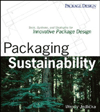Printing: Label Substrate
Sustainability Drive Is Good News for BOPP Film

The global Biaxially Oriented Polypropylene (BOPP) film market has seen demand grow by just under 5 percent per annum over the last five years. The main driver of growth has been the demand for flexible packaging, particularly in China and South East Asia, according to Wood Mackenzie’s latest ‘BOPP Film Global Supply Demand Report’.
The BOPP film industry, worth in the region of $15 billion, delivered over 8.4 million tonnes in 2018. The global market is currently well-supplied, dominated by China and the growing influence of Indian-owned producers who continue to expand their operations globally. Global demand for BOPP film is expected to grow at a healthy rate of 4.7 percent annually over the next five years to 2023.
The issue of recycling and sustainability has, in certain applications, favored BOPP film over other polymer films. Multinational brands are looking to film producers and converters to provide monomaterial plastic packaging solutions to meet sustainability commitments.
Overcoming Plastics Backlash
Global BOPP film demand continues to see healthy growth despite the backlash against plastic packaging. In fact, the issue of recycling and sustainability has created a favorable set of circumstances for the BOPP film sector. As part of a circular economy, brands are being pressured to find more environmentally-friendly ways of packaging their products. This has caused a shift in focus from multi-material and multi-layer laminates, which are currently non-recyclable, to monomaterial laminates.
“The fact that BOPP film is part of the wider polyolefin chemical family means it can be laminated, with polyethylene film for example, and still be widely accepted in today’s recycling waste stream. Our research indicates that, in certain applications, the consumption of BOPP film has benefitted from this sustainability drive at the expense of other polymers,” said Robert Gilfillan, Wood Mackenzie head of Films & Flexibles.
Flexible packaging will continue to be the key end-use sector for BOPP film. The need for transparent commodity film, which is often used in food packaging, is expected to drive future demand. With a positive short-term outlook, investment opportunities within the sector are becoming more attractive.
Looking for a reprint of this article?
From high-res PDFs to custom plaques, order your copy today!






